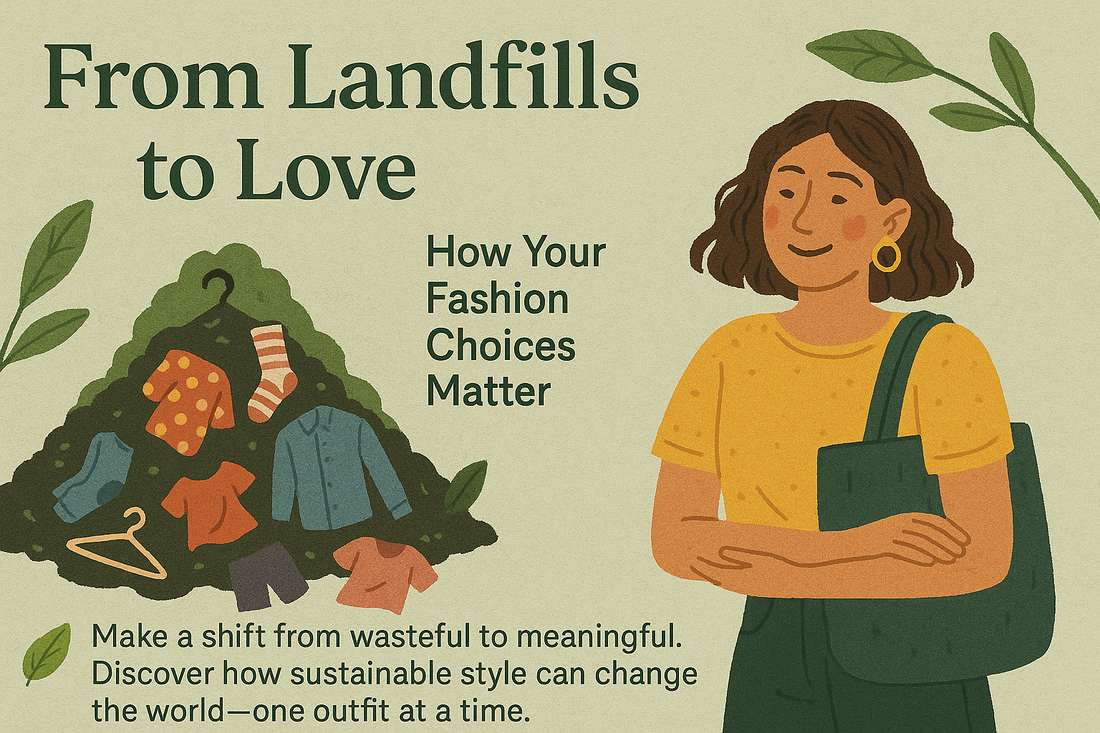
From Landfills to Love: How Your Fashion Choices Matter
Share
I used to say: “I have nothing to wear.”
Even though my closet was spilling over.
Turns out, most of those clothes were impulse buys, trends worn once, or items I never loved. And then I read this: 92 million tonnes of fashion waste end up in landfills every year globally. Guilt hit hard.
That old floral dress? More than fashion gone wrong it joined a planetary problem. That’s what sparked Pacchis Barah, a brand born from clothing burnout, meant for anyone who’s over fast fashion and ready to move toward mindful style.
What actually happens to clothes in India?
So many of us clean out our closets every year donating or chucking old clothes. But here’s the twist: most donated items don’t find homes. Instead, they end up in landfills or are exported, piling up in markets that can’t recycle them. India alone creates about 7.8 million tonnes of textile waste each year, including scrap, household discards, and imported second hand. And less than 50% gets reused or recycled. The rest? Landfill-bound or dumped.
The hidden cost of “cheap” fashion :
-
79 trillion liters of water are used every year for clothes production worldwide.
-
Textile dyeing is the second-largest polluter of water globally.
-
Fast fashion causes about 10% of global carbon emissions, more than all international flights and shipping combined.
“Buying a ₹299 blouse might feel like a steal but the environment pays that bill.”
Quick reality check: our wardrobes under the magnifying glass
|
Stat |
Why it matters |
|
30% of clothes go unworn every year |
We buy emotionally, not practically |
|
Most clothes are worn just 7–10 times before being tossed |
Trends fade faster than quality |
|
Polyester takes 100–200 years to break down |
Releases microplastics in the process |
But hey, want to feel good in your clothes? That’s valid.
We just need smarter, planet-aligned ways to do it.
Real steps that actually make a difference
|
Swap This |
For That |
Impact |
|
Fast-fashion buys |
Thrift or second-hand finds |
Saves water, cuts emissions, supports circularity |
|
Tossing old clothes |
Mending or upcycling |
Gives garments a second life |
|
Buying for one-time events |
Renting from eco-platforms |
Lowers production demand |
|
Impulse shopping |
Capsule wardrobe curation |
Cuts your carbon footprint by up to 30% |
Just imagine: if 10 people repaired old jeans instead of buying new ones, they’d save enough water to make 120 new pairs. Now, if that was 10,000 people, that’s a powerful wave of change.
Why does India need this shift now ?
India’s textile waste breaks down like this: about 42% pre-consumer (scraps), 51% post-consumer (household discards), and 7% imported clothes. And only a fraction gets recovered thanks to mixed fabrics, poor sorting, and infrastructure gaps.
Donations? Often only 10–30% of clothes get re-sold in charity shops. The rest floods markets or ends up in landfills, especially clothes blended with synthetics.
Your small changes = big impact
-
Donate responsibly: Only give clothes in good, clean condition.
-
Support brands that care: Choose companies transparent about how their clothes are made.
-
Reduce consumption: Stock your wardrobe with high-quality pieces that last and yes, a capsule wardrobe of 25 items can cover 80% of outfits.
-
Get involved locally: Just 30 minutes of DIY mending can keep another outfit out of a landfill.
-
Thrift or rent instead of buying new: One pre-loved purchase can save 2 kg of CO₂.

Initiatives making a difference
-
Goonj turns urban waste into resources for rural communities.
-
I Was A Sari transforms old saris into new fashion, empowering women and promoting zero waste.
-
Plastic weaving projects in Dharavi turn discarded plastic into livelihood-driven art.
These models show how you and I can be part of a circular fashion revolution in India and beyond!
FAQs: Quick Answers You Need
Q: What exactly is fast fashion?
Cheap, trendy clothing is made fast often with environmental and labor costs.
Q: How can I reduce my fashion footprint?
Repair, thrift, rent when possible, research ethical brands, and build a capsule wardrobe.
Q: Is thrift shopping safe?
Yes. Most thrift stores follow hygiene standards. Always wash or steam before wearing.
Q: How do I know if a brand is eco‑friendly?
Look for clear supply chains, sustainable materials, and certifications. Tools like Good On You help.
Q: Can I repair clothes myself?
Absolutely! Sewing kits and online tutorials can teach basic skills like patching and rebuttoning.
Q: What is “circular fashion”?
It’s a system where clothes are reused, repaired, recycled or rented keeping materials forever in circulation.






